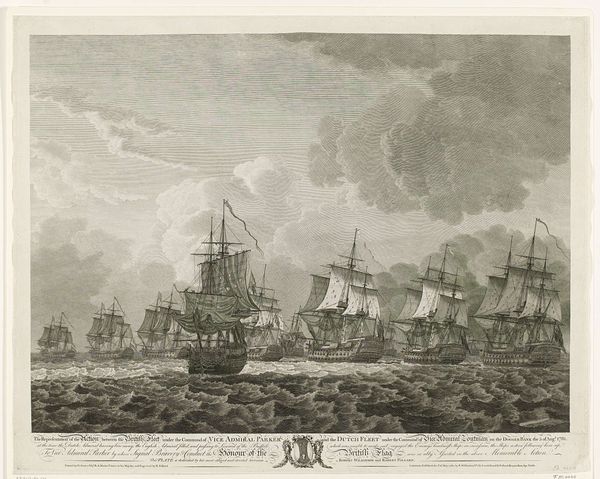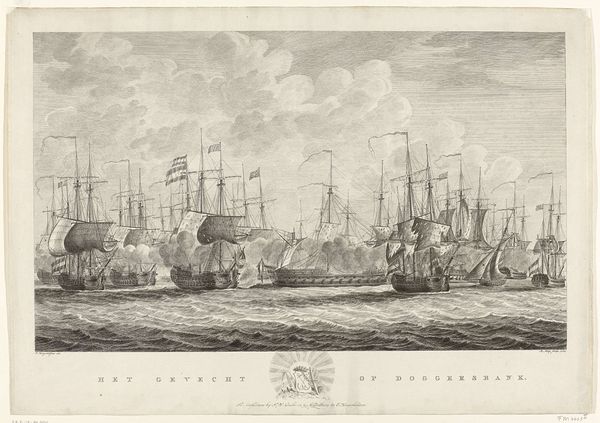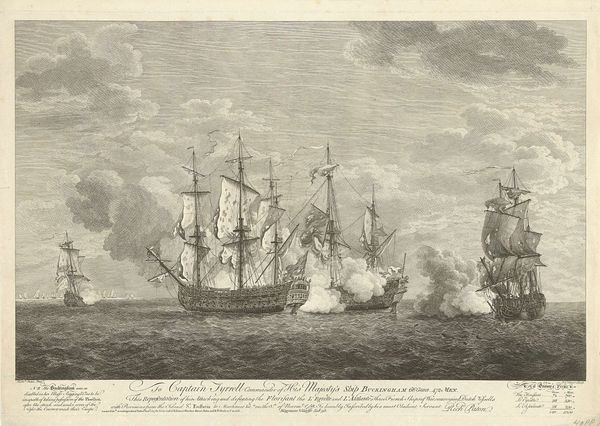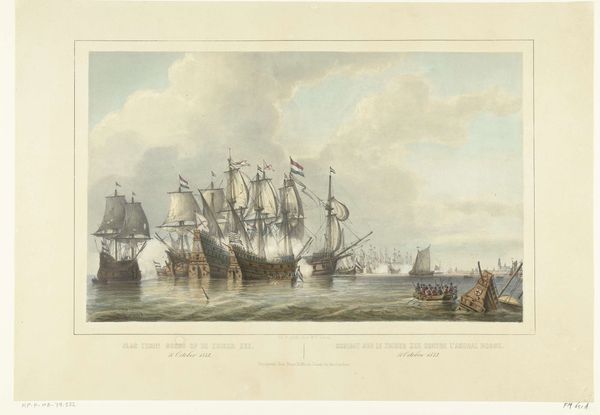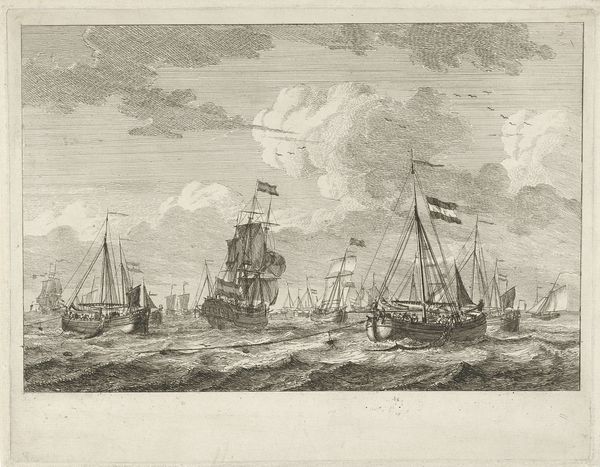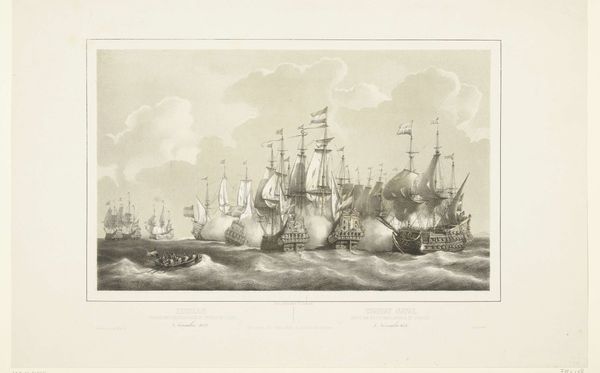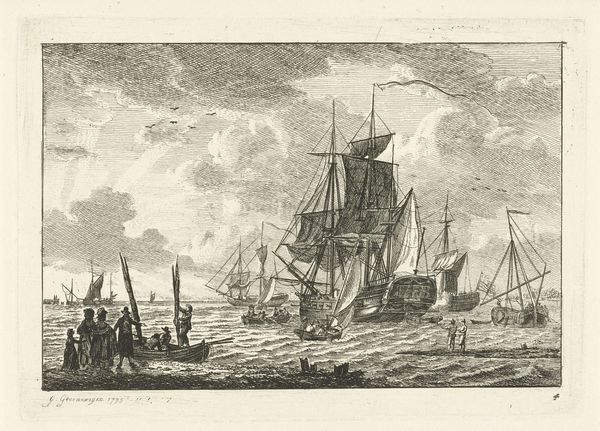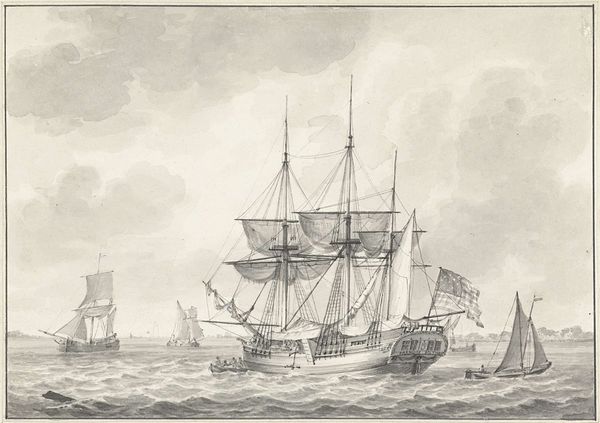
Dimensions: height 492 mm, width 605 mm
Copyright: Rijks Museum: Open Domain
Curator: Welcome. Today, we’re looking at “Zeeslag bij Doggersbank, 1781,” an engraving by Daniel Lerpinière from 1782. What are your initial thoughts? Editor: Immediately, the drama of this piece strikes me. It's chaotic yet ordered, dominated by an oppressive sky and bristling warships engaged in intense combat. There's a powerful tension, almost operatic. Curator: Lerpinière’s skillful use of line certainly creates that drama. Note how the density and direction of the engraved lines give shape to the forms, define texture in the waves and clouds, and generate such a vivid sense of depth, structuring the composition with its meticulous detail. The print method in itself flattens reality to black-and-white lines, making us examine form more than anything else. Editor: Absolutely. Considering this depicts the Battle of Dogger Bank during the Fourth Anglo-Dutch War, one must also contemplate whose perspective we are viewing. The ships of the British Royal Navy are prominently in the foreground, engaged in battle against a smaller squadron of ships representing the Dutch Republic. Curator: Indeed, these compositional elements draw us to the forms of the vessels: The ships are rendered with incredible precision. He emphasizes the sails, the rigging—all of it constructed with lines forming intricate shapes. Editor: But at what cost? Beyond a feat of artistic skill, shouldn’t we reflect upon the romanticizing of violence and imperial ambition? War is being portrayed here in an appealing, almost aesthetic way. The human suffering, the real cost of the naval conflict is rendered invisible, reduced to the glory of British maritime supremacy. Curator: It is vital to be historically sensitive, yet by closely inspecting the work’s intrinsic visual language, we understand how effectively it communicates a certain point of view. The engraving, a reproductive medium by design, disseminated such narratives. It served to glorify the nation. Editor: A chilling reminder of how art can normalize and validate political and military power. I’m also considering how these images perpetuated imperial dominance as visual propaganda during its time and to ours. Curator: Thank you, your view definitely challenges mine. The lines and shapes work harmoniously but there is tension between the subject of empire it depicts and the means of printmaking that democratized such depictions. It definitely gave me much to ponder about hierarchies and accessibility.
Comments
No comments
Be the first to comment and join the conversation on the ultimate creative platform.
